To look at Sutton Common a few years ago you’d be forgiven for thinking it was a fairly standard amenity parkland with relatively little value for wildlife.
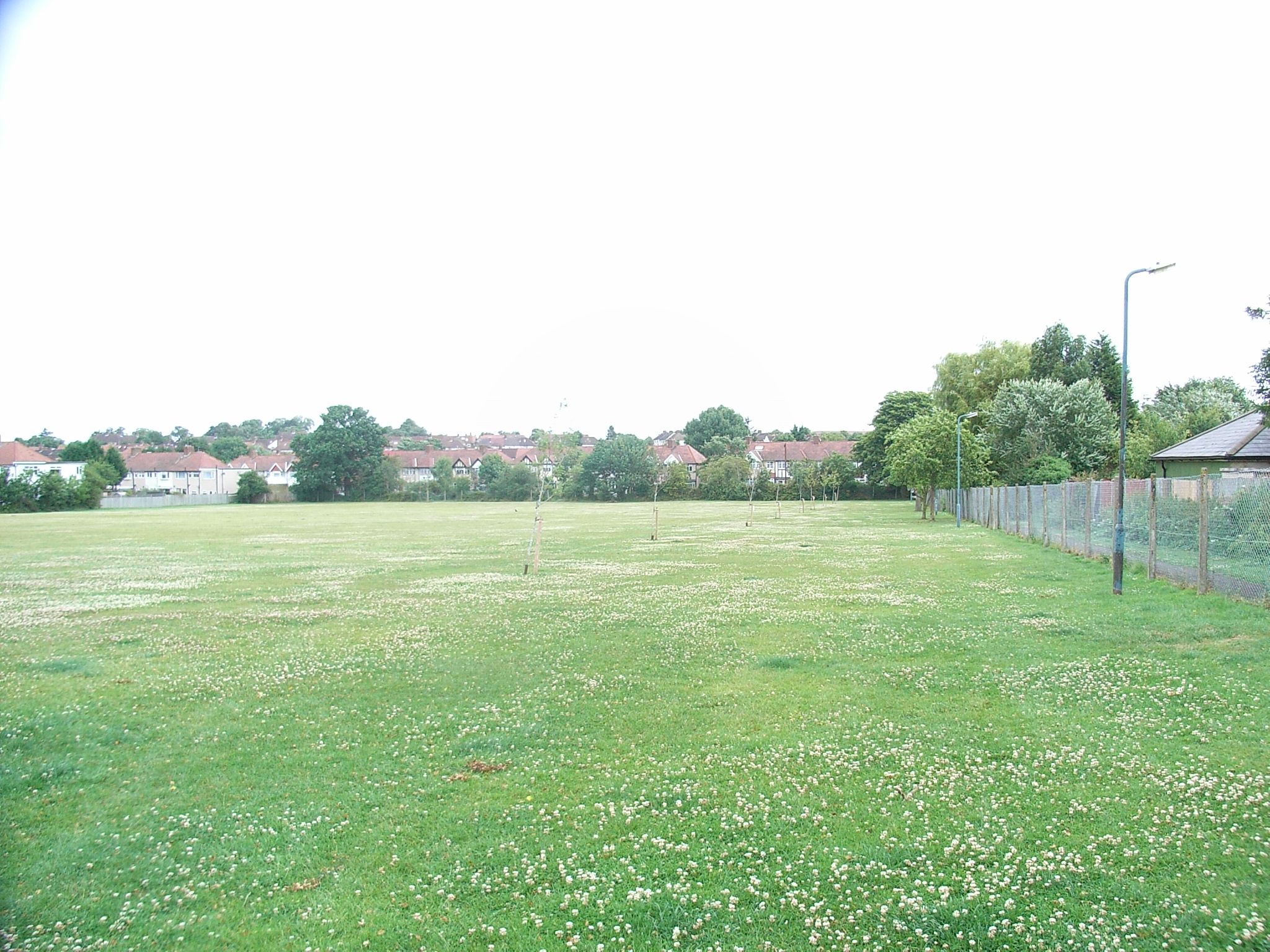
Sutton Common in 2008, before any conservation work
If you looked right now you would see a huge amount of churned up mud and wonder what on earth is going on. Incensed by the view of grassland carnage, you would almost certainly descend on me, teeth bared, demanding answers or blood. Fear not, mutinous Sutton-ites, all will become clear in time.
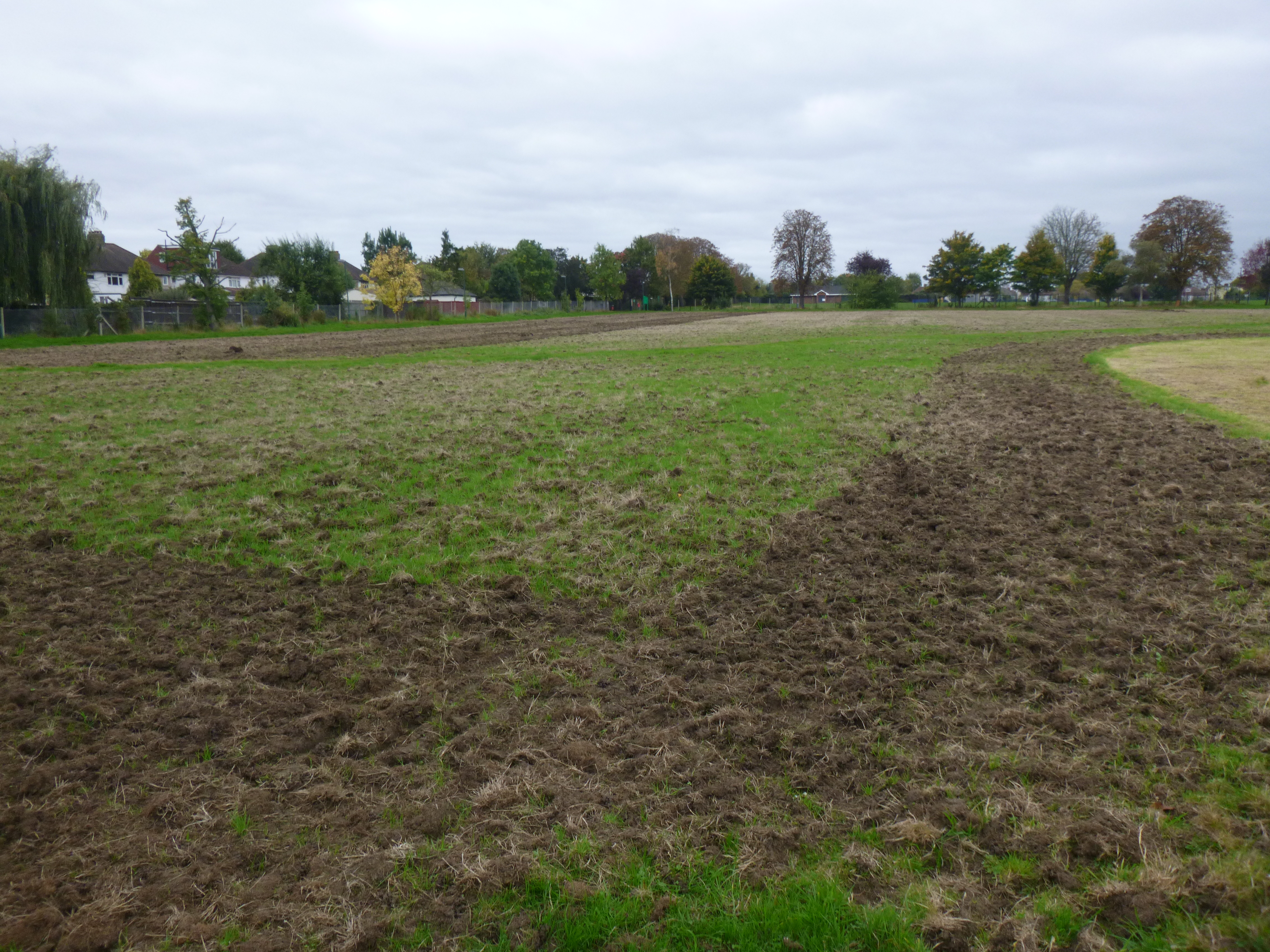
That’s neat, that’s neat, that’s neat, that’s neat I really love your tiger feet! (Wrong kind of Mud? Oops…)
But first, some backstory…
The site we refer to as Sutton Common is the field to the north east of the Sutton Common Recreation Ground, and it hasn’t always been managed for wildlife. Until 2009, when LBS Biodiversity (and the SNCV!) took over management, it was treated much the same as the rest of the park. However, it was deemed too wet to be easily maintained as a sports and recreation site. Wetness is no a bad thing for wildlife habitat, however, so it was decided that the site would be changed to a meadow, for nature conservation purposes.
At this point, the whole site was absolutely dominated by Creeping Bent grass (Agrostis stolonifera). In order to deal with this and diversify the structure of the site, one of the first works undertaken was to create a large ‘scrape’ area to the north.
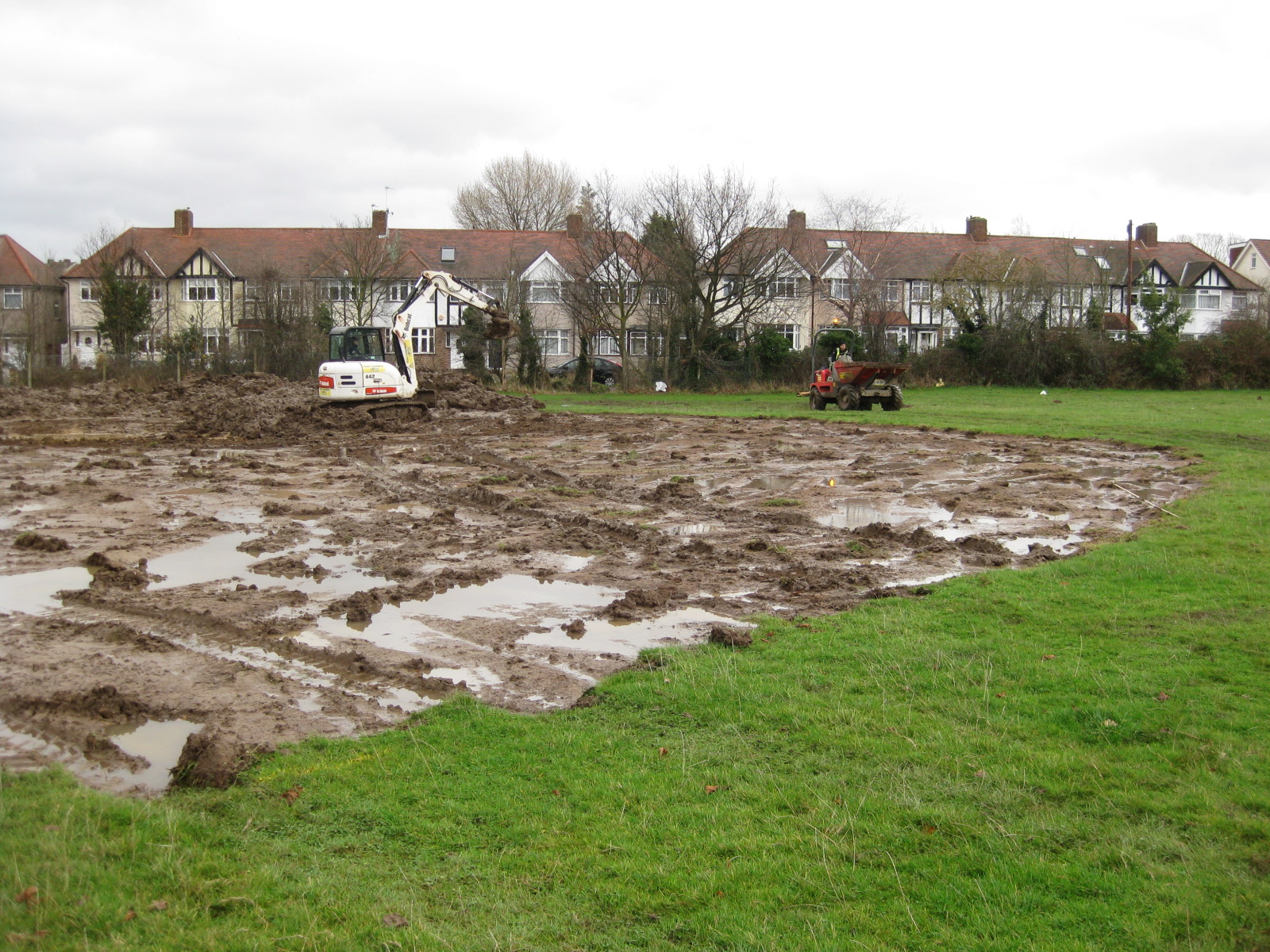
Scrape creation, 2009.
Scraping (removing a certain amount of topsoil) from this area allowed the waterlogged ground to become more of a feature rather than a hinderance to the site. Standing water in this area now creates a small ephemeral pond in the winter months, and retains some dampness in the summer, creating a ‘wet meadow’ type habitat. This has since been seeded and planted with species relevant to a damp habitat, and is still being managed this way.
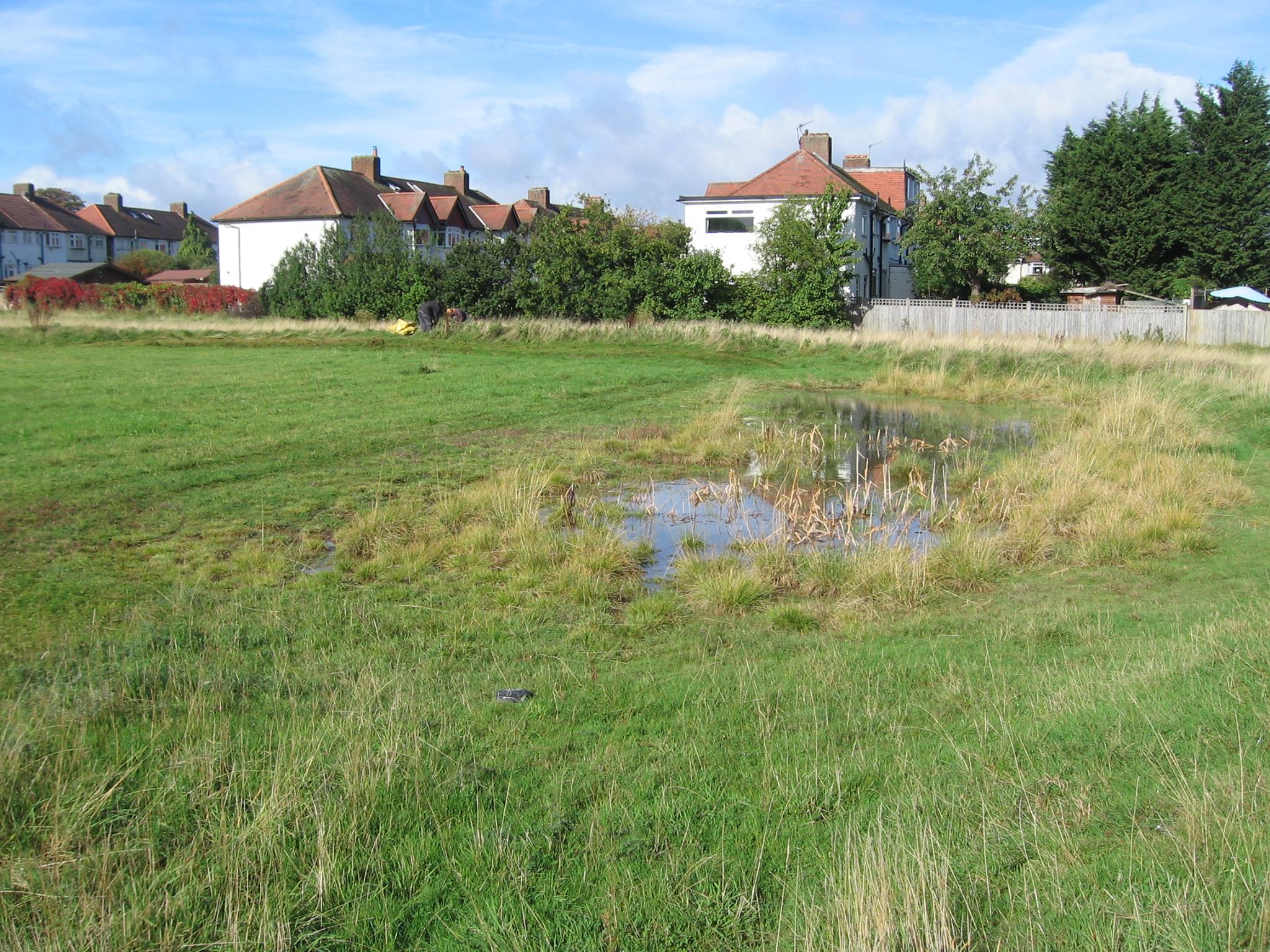
Scrape with water, Sept 2015
The ‘pond’ is not permanent, fluctuating with rainfall and normally more or less drying up in the summer.
Ponds like this are referred to as temporary, ephemeral or vernal pools. Due to their lack of fish means amphibians and invertebrates can thrive there without predation, offering a much needed safe haven for many species.
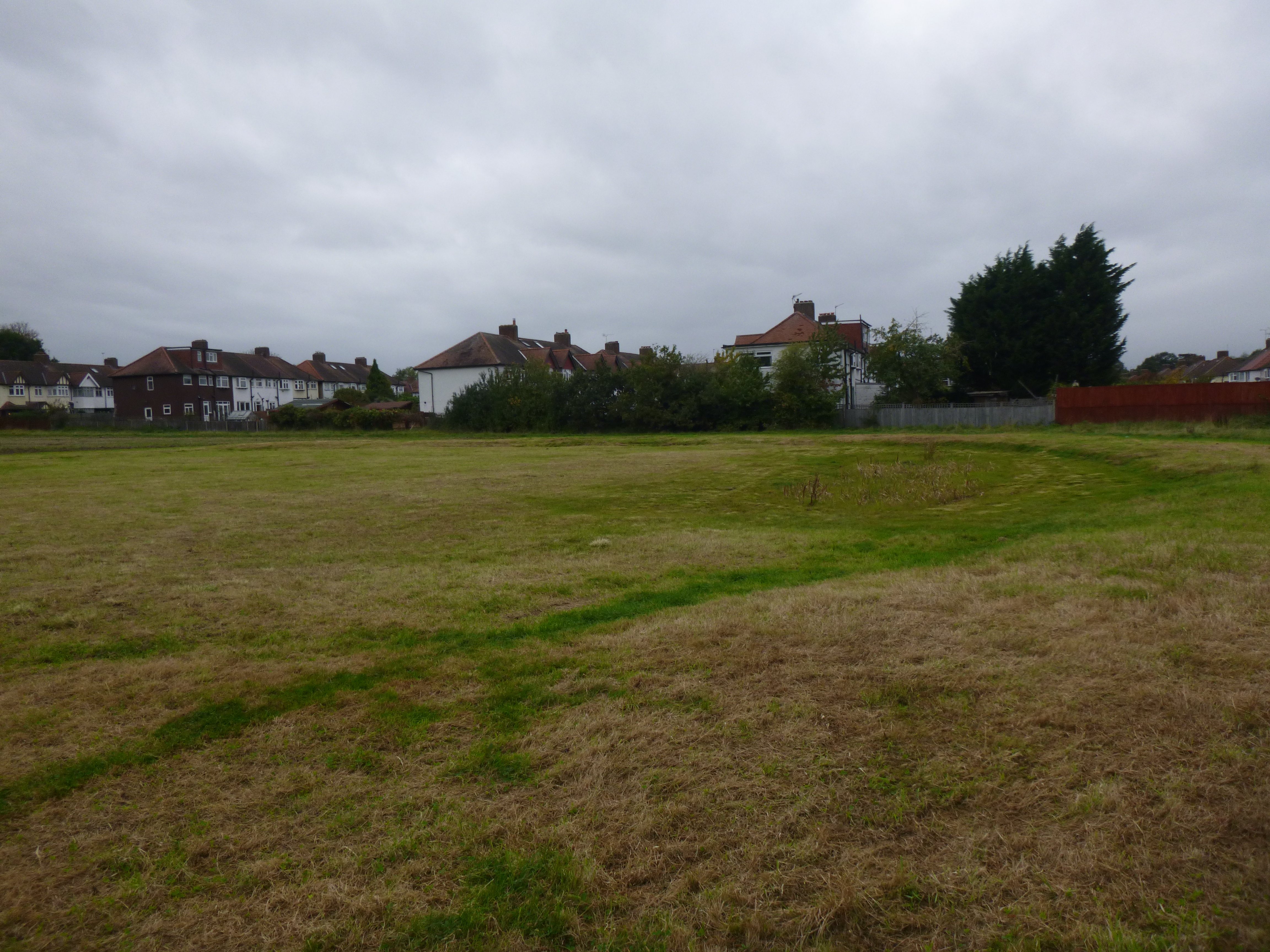
Scrape wet, but not full, Sept 2017
It does, however mean that the plants in the pond have to be hardy enough to survive both in and out of water, with varying degrees of water. A pond without plants is far less useful as the vegetation provides benefits such as food and shelter.
For this reason the pond was seeded with mainly hardy marginal wetland species that can deal with both deluge and drought such as Ragged Robin (Lychnis flos-cuculi), Creeping Buttercup (Ranunculus repens) and Lady’s Smock (Cardamine pratensis) with some species faring better than others over the years.
Following this work, a lot of time and effort went into attempting to change the botanical make up of the rest of the meadow. Most of the site was overrun creeping bent which was stopping any other grasses or wildflowers (with the exception of a few very hardy bits like clover). To remedy this, the area was overseeded with Hay Rattle (Rhinanthus major), a semi-parasitic plant that keeps grasses such as Creeping Bent at bay by stealing their nutrients. For this reason it is often lauded as great plant for a fast track to a biodiverse meadow. Stimying the grass growth allows more space and nutrient to be freed up for other, less aggressive species like many wildflowers.
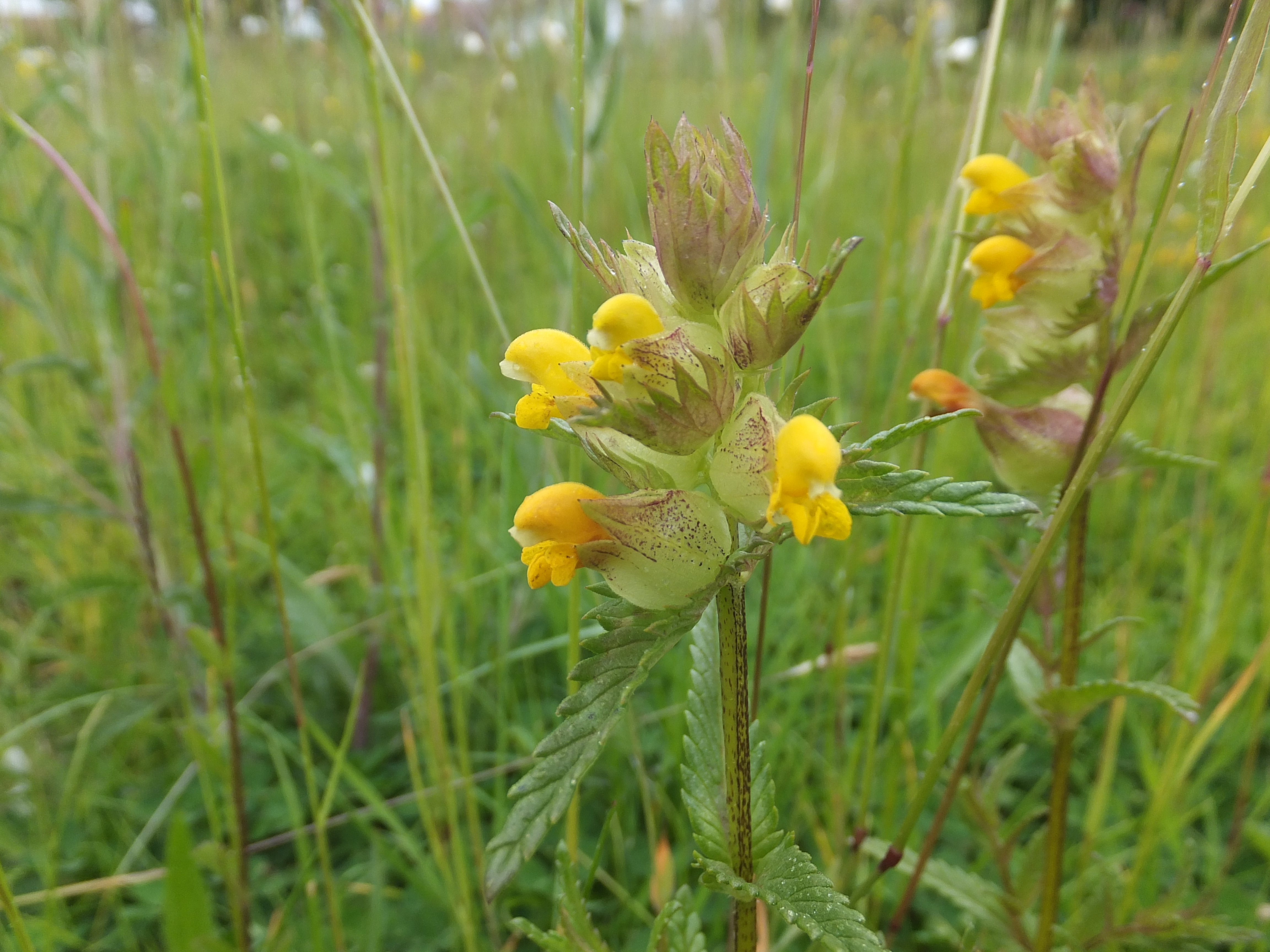
Hay Rattle (Rhinanthus Major) at Sutton Common
The introduction of hay rattle on this site only had limited success. Some patches did take, and in these areas it had the desired effect, suppressing grass and increasing potential for wildflower growth. Eventually though, the creeping bent, hell bent (hah!) on domination, stamped out the hay rattle and bar a few isolated patches, returned the burgeoning meadow to a homogenic swathe of grass and clover.
Due to this persistence, it was decided to undergo the current meadow creation work. The first steps of this were to spray the entire area with pesticide to kill off the unwanted species, then rotovate the soil to churn it up, exposing bare soil.
This work has currently been stalled due to the soil’s wetness (maybe the parks team were wise to give up their waterlogged field?) and there is still more rotavating and weed control to be done to create a fine receptive soil. A ‘blank canvas’ into which we can finally seed. The seed mix will be a mixture of less aggressive grasses, and wildflowers which will hopefully help us create what we’ve wanted all along at Sutton Common – a wildflower rich meadow.
As I mentioned, the initial seeding of the pond was more successful for some species than others. In order to help increase the biodiversity of the pond, I’m organising a community planting day when we will plant over a hundred pond margin and wetland plants. (Please come! Details below or on facebook)
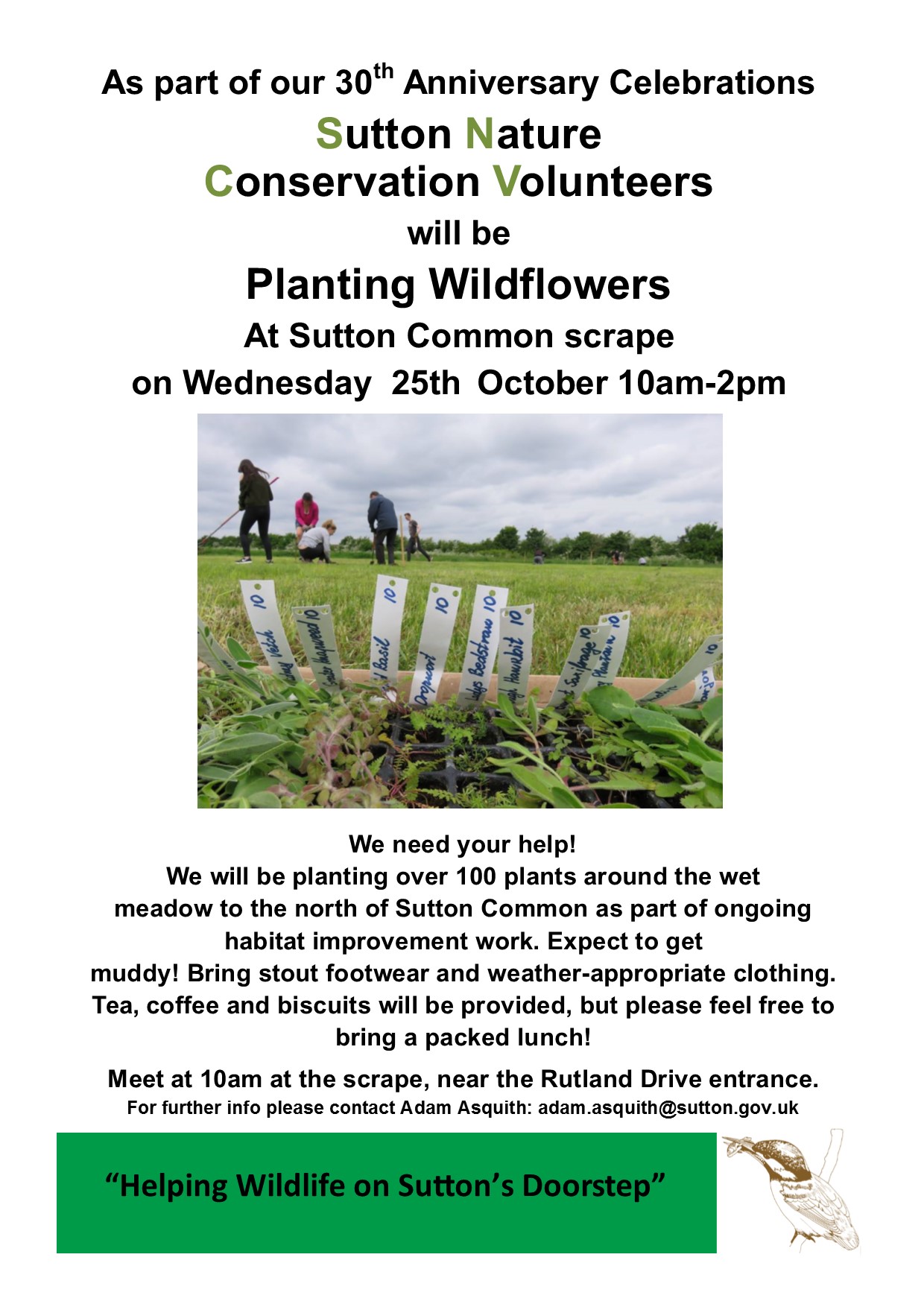
Species to be planted on the day include wetland plants such as Gypsywort (Lycopus europaeus), Water Figwort (Scrophularia aquatica) and Purple Loosestrife (Lythrum salicaria) and more meadow-suited plants like Devil’s Bit Scabious (Succisa pratensis), Autumn Hawkbit (Leontodon autumnalis) and Hemp Agrimony (Eupatorium cannabinum). By planting these we can create a more diverse pond, and a smooth transition between meadow and pond.
With continued management we will drastically change the botanical makeup of Sutton Common, and improve the habitats therein. With a bit of volunteer elbow grease, the site will develop into the well balanced and beautiful haven for wildlife that was originally envisioned when the park was taken under the Biodiversity Team’s wing in 2009. What a great way to help wildlife on Sutton (Common)’s doorstep!








October 12, 2017 at 9:46 am
Reblogged this on Life Munki and commented:
Awesome, informative blog about the work taking place at Sutton Common to diversify the landscape and pond wildlife by the loveliest of lads- Adam Asquith. =)